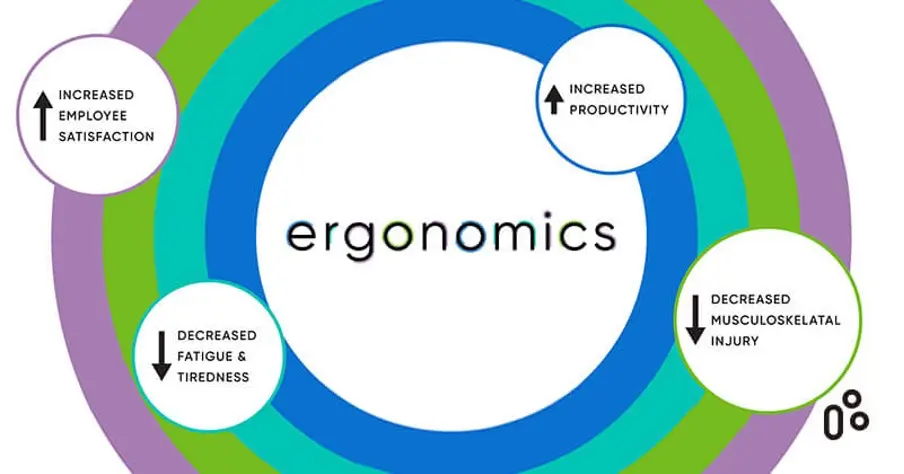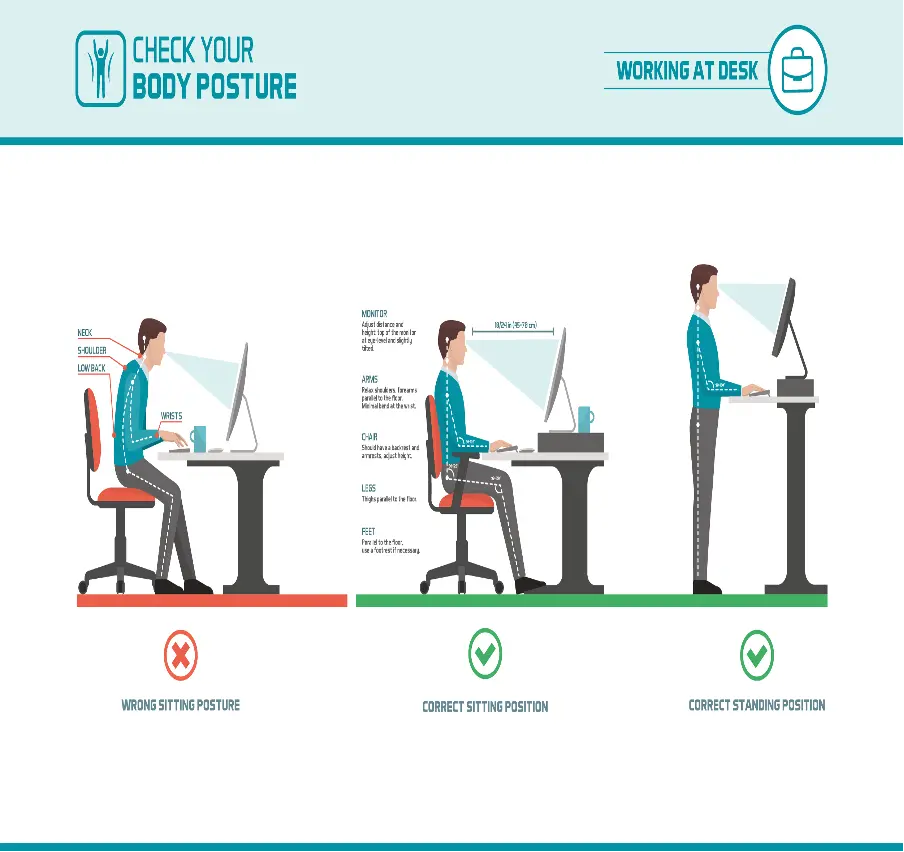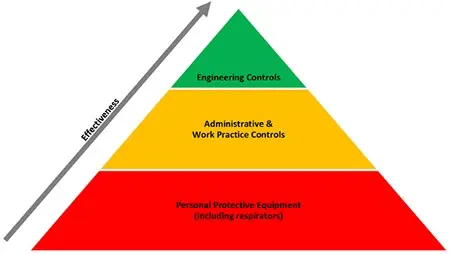Ergonomics is the science of fitting workplace conditions and job demands to the capabilities of employees.
“Fitting the job to the person”
Ergonomics principal used to improve the fit between workers and workplaces.

Ergo= Work
Nomics= Rule or Law
So, basically, ergonomics is the law of work that benefits the worker in the workplace.

History
I learned that the history of ergonomics dates back to ancient times when people realized the importance of designing tools and work environments for safety and efficiency. The modern field of ergonomics began to develop in the late 19th and early 20th centuries with a focus on the study of work and its effects on the human body.

The term “ergonomics” was first used by a Polish scientist Wojciech Jastrzebowski in 1857. He described the science of work and the study of human physical and mental capabilities in relation to work activities. During World War II, ergonomics gained attention as military researchers sought to improve equipment and work environments for soldiers, leading to the development of new technologies and techniques for safer and more efficient designs.
Today, ergonomics is a well-established interdisciplinary field that plays a critical role in the design of products, equipment, and work environments and continues to improve the safety and well-being of workers. It also helps reduce sickness absenteeism among workers and helps increase output.
Elements of ergonomics:
- Static work: Musculoskeletal efforts are required to hold the body in a certain position even at rest, even in a comfortable position.
- Force: Amount of tension muscle generated.
Main principals:
- Muscle force should be applied to the largest possible group of muscles available.
- Work activities should be performed with the joints at the midpoint of their range of motion.
- Work activity should permit workers to adapt to different healthy and safe processes.
Goal:
Enhancement of job performance while improving health, comfort, safety, and job satisfaction.

Six pillars:
- User orientation
- Effect on human
- Objective data
- Scientific method
- Diversity
- Systems
Advantages:
Increased production
Increase safety at workplace
Improve health at workplace
Decrease incidence of injury
Increase employee moral
More job satisfaction
What is not ergonomics?
Applying universal checklist and guidelines blindly
Using oneself as a model for designing.
Using common sense instead of records.
Ergonomics related injuries:
Known as:
CTD (Cumulative Traumatic Disorder)
RSD (Repetitive Stress Disorder)
RMI (Repetitive Motion Injuries)
E.g. MSD

Ergonomics In the Workplace
The goal of ergonomics in the workplace is to create a safe and comfortable working environment that minimizes the risk of injury and promotes productivity. This can involve the design and arrangement of equipment, tools, and physical space to reduce the strain on the body, as well as training and education programs to raise awareness of best practices and safe behaviors.
Ergonomics in the workplace can encompass a wide range of issues, including:
- Workstation design: A well-designed workstation can help reduce the risk of injury and improve comfort, including the positioning of computer monitors, keyboards, and chairs.
- Equipment design: The design of tools and machinery can have a significant impact on worker safety and comfort. For example, tools that are too heavy or poorly balanced can cause strain and injury.
- Body mechanics: Good posture, lifting techniques, and proper body movements can help reduce the risk of injury and improve comfort while performing work tasks.
- Work organization: The way work is organized can have an impact on worker safety and comfort. For example, tasks that require repetitive motions or prolonged periods of standing can increase the risk of injury.
- Training and education: Providing workers with training and education on ergonomics best practices can help reduce the risk of injury and improve overall comfort in the workplace.

Most Appropriate Example of Ergonomics at Workplace
One of the most appropriate examples of ergonomics in the workplace is the design and arrangement of computer workstations. This can include features such as:
- Adjustable chairs and desks: Workers should be able to adjust the height of their chair and desk to ensure that their feet are flat on the floor and their back is properly supported.
- Proper monitor placement: Monitors should be positioned at a comfortable distance from the worker and at the right height to minimize eye strain and neck strain.
- Ergonomic keyboards and mice: Workers should use keyboards and mice that are designed for comfort and reduce the risk of repetitive motion injuries.
- Document holders: Workers should be able to place documents at eye level to reduce neck strain.
- Anti-fatigue mats: Workers who stand for long periods of time should have access to anti-fatigue mats to reduce the risk of fatigue and discomfort.
By designing computer workstations that are ergonomically sound, employers can help reduce the risk of injury and improve comfort for workers. This can lead to increased productivity and a more positive work environment.
FAQs
What is the purpose of ergonomics in the workplace?
The purpose of ergonomics in the workplace is to design workstations, equipment, and processes in a way that minimizes the risk of injury and maximizes comfort and productivity for workers.
What are some common ergonomic issues in the workplace?
Some common ergonomic issues in the workplace include repetitive motion injuries, back pain, eye strain, and musculoskeletal disorders.
What are some ways to improve ergonomics in the workplace?
There are several ways to improve ergonomics in the workplace, including designing workstations and equipment to fit the worker, providing training on proper posture and body mechanics, and creating work processes that minimize repetitive motions and prolonged periods of standing.
What are the benefits of ergonomics in the workplace?
The benefits of ergonomics in the workplace include reducing the risk of injury, improving worker comfort and productivity, and creating a more positive work culture.
Who is responsible for implementing ergonomics in the workplace?
Employers are responsible for implementing ergonomics in the workplace and ensuring that the work environment is safe and comfortable for workers. However, workers also have a role in promoting ergonomics by following best practices and reporting any issues or concerns.
Is there any legislation or regulation related to ergonomics in the workplace?
Yes, there is legislation related to ergonomics in India. The primary legislation is the Occupational Safety, Health, and Working Conditions Code, 2020, which consolidates and amends various laws relating to the safety, health, and working conditions of workers in India.
In addition to the Occupational Safety, Health, and Working Conditions Code, 2020, various sector-specific regulations and guidelines also exist, such as the Factories Act, 1948, which applies to factories, and the Mines Act, 1952, which applies to mines. These laws set specific requirements for ergonomic conditions in the workplace and the provision of safety equipment and training.
Which is the best example of applied ergonomics?
One of the most appropriate examples of ergonomics in the workplace is the design and arrangement of computer workstations.
#ergonomics #ergonomics at workplace #Workplace Safety

Add a Comment
You must be logged in to post a comment